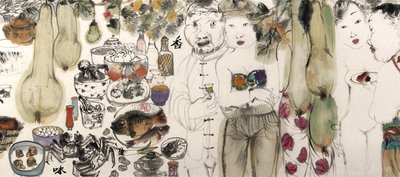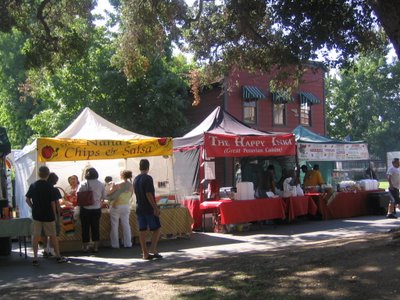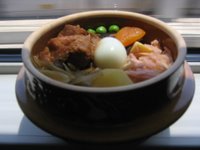A year of food blogging
I began this blog in January and the year is drawing to a close. What have I learned after 12 months of posting about food? A rough inventory of some 48 entries show: things I make for my daughter (simple cakes of yogurt or chocolate, pancakes); cooking for feasts (Easter, Thanksgiving and Christmas); local spots (favorite eating places and farmers' markets); experiments with various produce and products (Meyer lemons, Swiss chard, Latini pasta); food as gateway to different cultures (Persian khoresh, Korean noodles, Peruvian ceviche); food and family (my mother's Le Crueset pot, tomato jam, tea eggs, my grandmother's tempura) memories of France (specialties in Brittany and Alsace) and finally, reflections on Japanese culture (bento, beans, wagashi and washoku).
All these things form a part of the "gastronomical me" but there is a missing element that is rather crucial: what I eat when I am alone. Sharing food is no doubt one of the meanings of life but for my last entry I would like to consider eating, egoistic though it may sound, as an act of self-love and affirmation.
Nobody expressed this better, at least in the Japanese language, than the writer Mori Mari. The daughter of Meiji novelist Mori Ogai, she spent a privileged childhood tasting exotic things that her father would bring back home, not only from his travels to Europe but from his forays into the Japanese imperial court. From early on she cultivated, through food, an intuitive sense of what constitutes "real luxury," and this remained the base during her later years when she began writing, divorced and living in relative poverty.
In a collection of essays titled Bimbo Savarin (penniless Savarin) she describes her life in a one-room apartment, the majority of which is spent in heroic efforts to procure, prepare and eat the things that keep her willful tongue happy. Her recipes don't necessarily make me salivate; for example, her favorite confectionery is a strange mixture of chocolate and sugar cubes -- two thirds painstakingly grated and one third laboriously chopped into bits. But I understand all too well the black moodiness that descends when she is unable to have exactly what her appetite demands. I find lovable the way she will cross town in pouring rain to find a fishmonger that will slice her sashimi just so, fighting chronic laziness and protesting legs (not made for walking, according to their master.) Alone at table, admiring the pearly white sole glistening with rainbow hues, she salutes herself for a mission accomplished, carefully dips a slice in shoyu and carries it to her mouth in a moment of sweet bliss.
What I want to learn from her is her special, childlike talent to, simply put, enjoy things. I find wonderful how eggs boiling in water or butter sizzling in a pan fills her with mirth and glee. The capacity for this kind of pure and innocent pleasure is the key to a true gourmand spirit and has nothing to do with the pursuit of eating fads and food connoisseurship that one sees so much of in food writing. "Taste" is a subjective and elusive thing, unquantifiable and absolutely individual depending on one's personal history, and prosaic factors too like the weather that day or stomach condition. It's impossible to objectively determine what is delicious and what is not; in the end it's just you and your tongue to decide and it's futile to let anyone tell you otherwise. So on that note, bon apetit and a very happy new year!
















